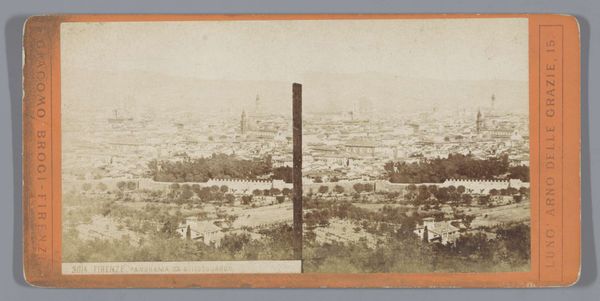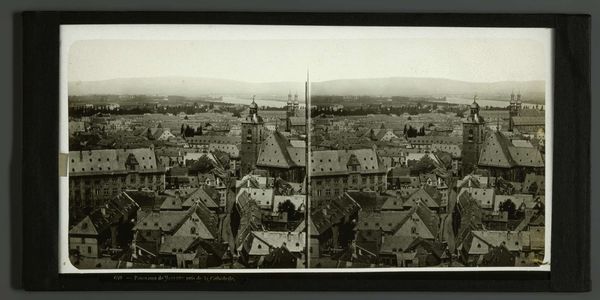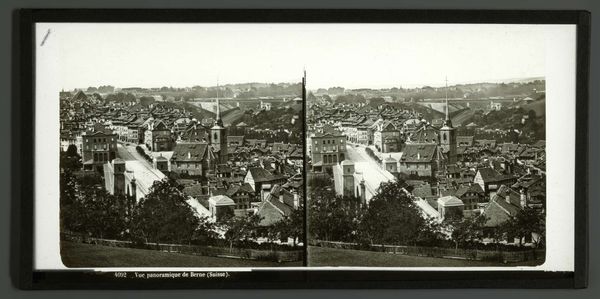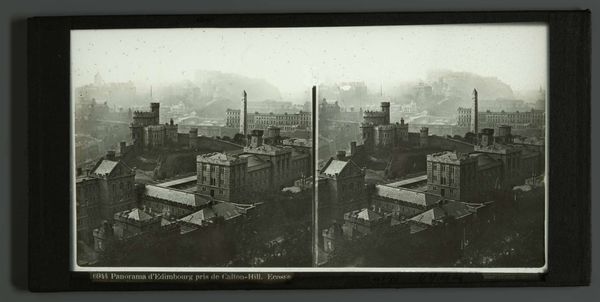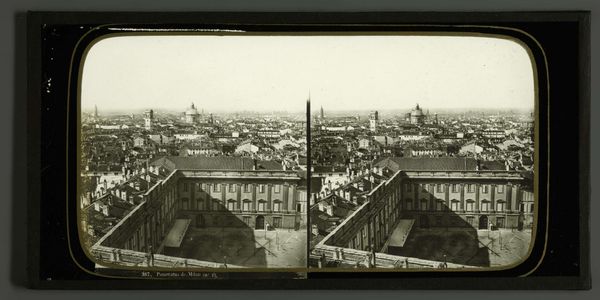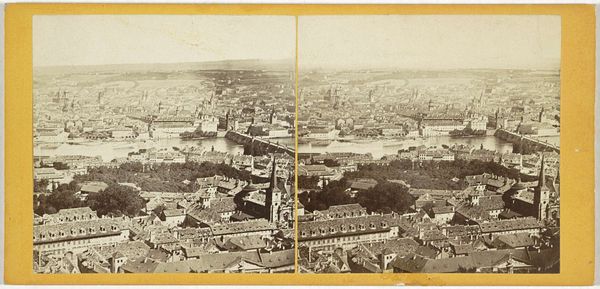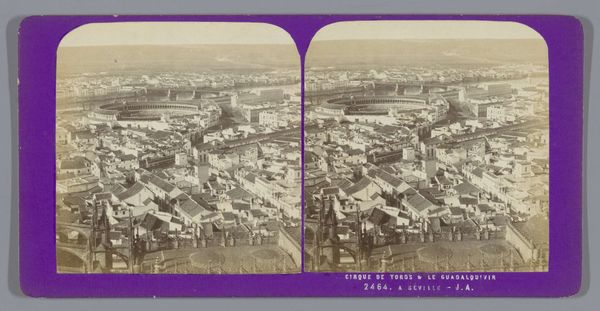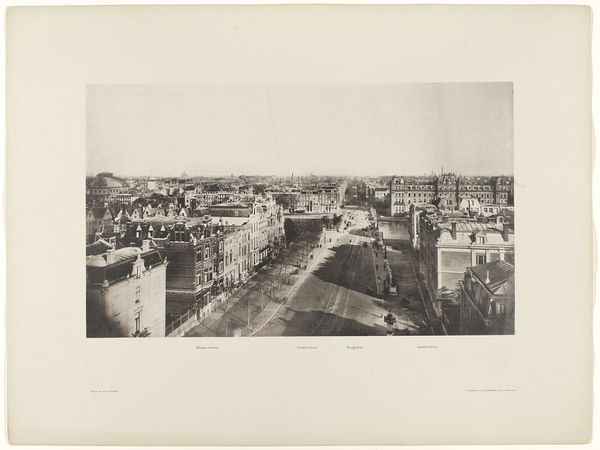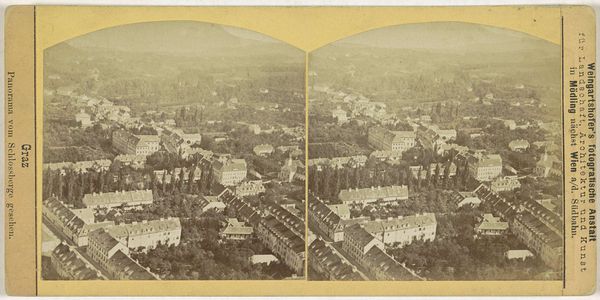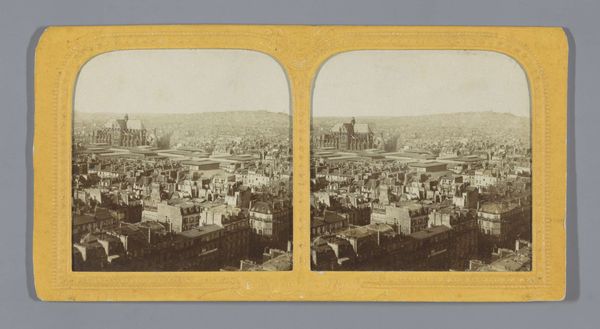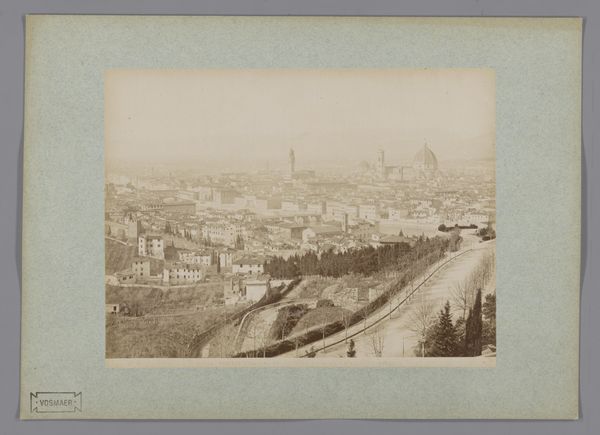
print, daguerreotype, photography
# print
#
landscape
#
daguerreotype
#
photography
#
orientalism
#
cityscape
#
realism
Dimensions: height 82 mm, width 170 mm
Copyright: Rijks Museum: Open Domain
Curator: It feels like stepping back in time, a slightly faded memory emerging. Editor: That's precisely the charm. This image, titled "Gezicht op Turijn, Italië," or "View of Turin, Italy," comes to us from the photographic partnership of Ferrier Père-Fils et Soulier, dating back to between 1860 and 1870. It’s a striking example of a daguerreotype, later printed. Curator: The cityscape feels so regimented, almost…authoritarian. All those identical buildings lined up perfectly. What does it signify about that period's values, that emphasis on order? Editor: Well, Turin was then the first capital of a newly unified Italy, so that ordered layout could represent civic pride and modernity. But it also served as a way of visually reinforcing state power, especially following periods of upheaval. Photography played an increasing role in such projects. The very act of capturing and disseminating such an image could underscore and amplify such state ideals. Curator: So the symmetry echoes the social and political structures? The uniform architecture perhaps suppresses individuality? Even the framing seems rigid. Editor: It's plausible. Cityscapes in that period often oscillated between documentation and propaganda, so the strict photographic process enhances realism. Think of it like an early form of urban planning promotion—selling an idea of a modern, organized metropolis. But equally so, consider photography's relatively quick adoption from Europe towards regions beyond, a process related to "Orientalism", that of European and American artists replicating preconceived and sometimes fictional concepts onto those non-European cultures, usually based upon little or no interaction, but more as forms of political statements. Curator: It gives me pause… looking at this scene, you wonder who benefited from this vision of progress, who felt excluded by that "ideal." What's lost by pursuing such an artificial arrangement? Is it nature, authentic lifestyles, or just visual excitement? Editor: Precisely! The beauty of studying such an image is unpacking all those layers. On the surface, it may be a simple urban landscape but it reflects social ambitions and cultural narratives. Curator: Yes, and now, stepping away, I see not only the image but how images are themselves instruments within historical forces.
Comments
No comments
Be the first to comment and join the conversation on the ultimate creative platform.
